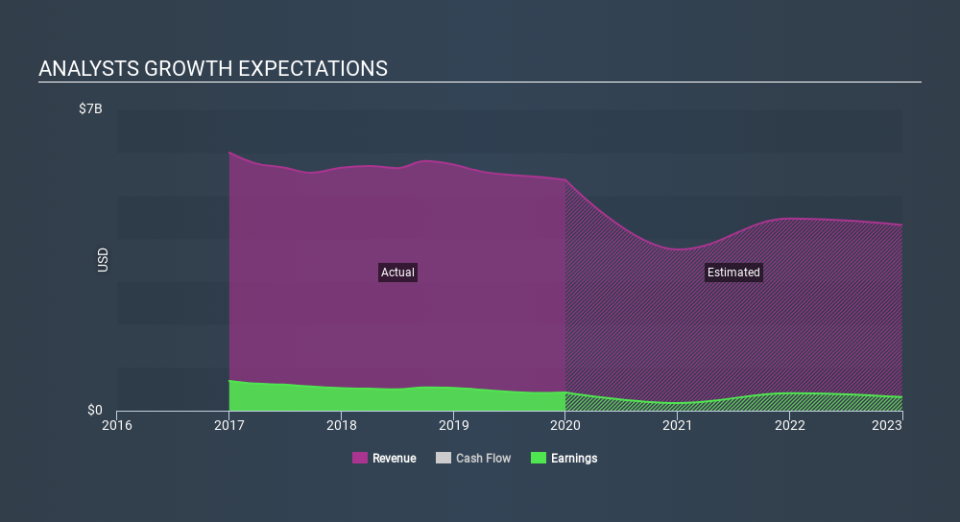The Consensus EPS Estimates For Harley-Davidson, Inc. (NYSE:HOG) Just Fell Dramatically

Today is shaping up negative for Harley-Davidson, Inc. (NYSE:HOG) shareholders, with the analysts delivering a substantial negative revision to this year's forecasts. Both revenue and earnings per share (EPS) forecasts went under the knife, suggesting the analysts have soured majorly on the business. Investors however, have been notably more optimistic about Harley-Davidson recently, with the stock price up a remarkable 26% to US$21.13 in the past week. It will be interesting to see if the downgrade has an impact on buying demand for the company's shares.
Following the latest downgrade, the 14 analysts covering Harley-Davidson provided consensus estimates of US$3.7b revenue in 2020, which would reflect a painful 30% decline on its sales over the past 12 months. Statutory earnings per share are anticipated to plummet 60% to US$1.08 in the same period. Previously, the analysts had been modelling revenues of US$4.4b and earnings per share (EPS) of US$2.45 in 2020. It looks like analyst sentiment has declined substantially, with a measurable cut to revenue estimates and a pretty serious decline to earnings per share numbers as well.
Check out our latest analysis for Harley-Davidson
The consensus price target fell 13% to US$25.73, with the weaker earnings outlook clearly leading analyst valuation estimates. The consensus price target is just an average of individual analyst targets, so - it could be handy to see how wide the range of underlying estimates is. The most optimistic Harley-Davidson analyst has a price target of US$37.00 per share, while the most pessimistic values it at US$13.00. Note the wide gap in analyst price targets? This implies to us that there is a fairly broad range of possible scenarios for the underlying business.
These estimates are interesting, but it can be useful to paint some more broad strokes when seeing how forecasts compare, both to the Harley-Davidson's past performance and to peers in the same industry. Over the past five years, revenues have declined around 2.6% annually. Worse, forecasts are essentially predicting the decline to accelerate, with the estimate for a 30% decline in revenue next year. Compare this against analyst estimates for companies in the wider industry, which suggest that revenues (in aggregate) are expected to grow 11% next year. So while a broad number of companies are forecast to decline, unfortunately Harley-Davidson is expected to see its sales affected worse than other companies in the industry.
The Bottom Line
The biggest issue in the new estimates is that analysts have reduced their earnings per share estimates, suggesting business headwinds lay ahead for Harley-Davidson. Regrettably, they also downgraded their revenue estimates, and the latest forecasts imply the business will grow sales slower than the wider market. After such a stark change in sentiment from analysts, we'd understand if readers now felt a bit wary of Harley-Davidson.
With that said, the long-term trajectory of the company's earnings is a lot more important than next year. At Simply Wall St, we have a full range of analyst estimates for Harley-Davidson going out to 2022, and you can see them free on our platform here.
Of course, seeing company management invest large sums of money in a stock can be just as useful as knowing whether analysts are downgrading their estimates. So you may also wish to search this free list of stocks that insiders are buying.
If you spot an error that warrants correction, please contact the editor at editorial-team@simplywallst.com. This article by Simply Wall St is general in nature. It does not constitute a recommendation to buy or sell any stock, and does not take account of your objectives, or your financial situation. Simply Wall St has no position in the stocks mentioned.
We aim to bring you long-term focused research analysis driven by fundamental data. Note that our analysis may not factor in the latest price-sensitive company announcements or qualitative material. Thank you for reading.

